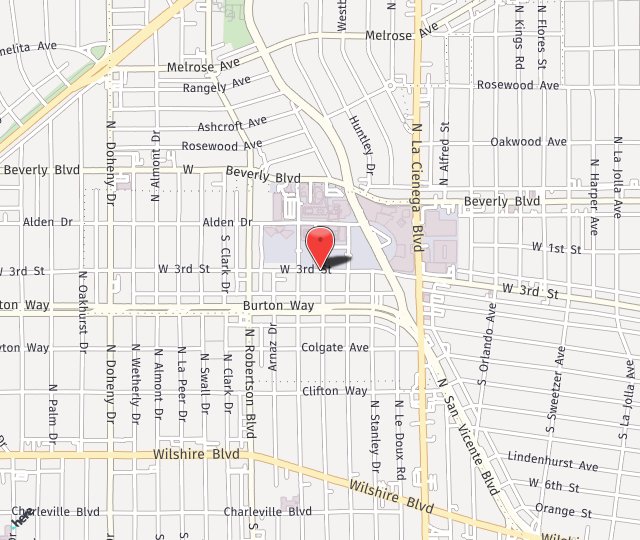Tendon Transfer Surgery
in Los Angeles

Tendon Transfer Surgery
When a patient has nerve damage that is affecting the body’s ability to signal muscle movement, it may be necessary for Dr. Seruya to perform a tendon transfer. Tendons have the job of connecting muscle to bone, and they are critical to the movement.
A tendon transfer may also be necessary when a muscle has ruptured or been lacerated and cannot be repaired, or in cases of certain disorders of the nervous system, where normal nerve signals are being prevented from getting to a muscle.
For these delicate surgeries to be successful, the patient must have a healthy, working tendon close to the area where the muscle can no longer be moved. This tendon may be serving an area where the movement involved is not as critical, so the tendon can be moved. The muscle and bone in the area of the transfer still need to be healthy and functional.
Tendon transfers are most prevalent in the hands and feet, but they can be used successfully in other areas such as the shoulders.
Candidates For A Tendon Transfer Surgery
In patients with long-standing nerve paralysis or in those patients with incomplete muscle recovery, simply fixing the nerve is no longer an option. This is because, by 12-18 months, the nerve permanently loses its connection to the muscle that it is controlling. After then, even if the injured nerve is fixed, it won’t be able to tell the muscle to contract. In these situations, a Tendon Transfer may be a useful treatment option. For this to be successful, there must be an available source of strong donor tendons close to the area in need of strengthening.
Conditions Treated With A Tendon Transfer
Tendon Transfer procedures are useful in treating;
- Brachial Plexus Palsy
- chronic forms of Carpal Tunnel Syndrome
- Cubital Tunnel Syndrome
- some forms of foot drop from Peroneal Nerve Entrapment
Reasons For Tendon Transfer Surgery
There are typically three scenarios where Dr. Seruya could be called upon to perform a tendon transfer. The first is a case of nerve damage. People sometimes leave a compressed or damaged nerve untreated, but this is a dangerous thing to do because after 12 to 18 months the damage can become permanent. Now there is no way for the brain to connect to the muscle in question, so the patient loses function in that muscle. Common nerve injuries treated with tendon transfer surgery are spinal cord, radial nerve, ulnar nerve, or median nerve injury.
In the second case, various disorders of the nervous system interrupt or otherwise inhibit the normal nerve signals from being sent to the necessary muscle. Just as with a damaged nerve, the muscle can no longer function without the nerve messages. Common nervous system disorders that could require tendon transfer surgery are cerebral palsy, stroke, traumatic brain injuries, and spinal muscle atrophy.
The third scenario would be a muscle that has ruptured or been lacerated. Muscle ruptures can occur with fractures or in patients with rheumatoid arthritis. Muscle or tendon lacerations occur with traumatic injuries.
Any of these could merit a tendon transfer so the patient is again able to use the impacted muscle.
How is a tendon transfer surgery done?
For these procedures, Dr. Seruya hopes to be able to use a tendon where there is some duplication in function. For instance, in the hand, there are two muscles that extend the index finger. One can be spared in this case to transfer its tendon to the needed location.
An incision is made to access the donor’s tendon. It is taken and then sewn into its new location. The muscle, nerve supply, and blood supply are left in place, just adding the functional tendon. When Dr. Seruya attaches the donor’s tendon, he may sew it into the same location or possibly to a different bone or different tendon. This depends on the situation and the location of the muscle that can no longer be controlled by the patient.
The incision is closed, and the procedure is complete. After healing, in many cases, the patient will need to re-learn how to operate the muscle with the new tendon.
Tendon Transfer Patient Testimonial
“Dr. Seruya made my Grand Daughter Stella’s future brighter! Stella is now 3 years old, she had brachial plexus injury from birth. She had a nerve transfer at the age of 0ne. Without Dr. Seruya my Grand Daughter would only have had the use of her right arm. Today because of him, Stella is able to do all the things she wants to without limitations. Dr. Seruya is and will always be answers to our prayers.” – Christine C.
How do I prepare for tendon transfer surgery?
This is major surgery, so you’ll need to prepare as you would with any surgery. You’ll need to stop taking any anti-inflammatory medications, blood thinners, aspirin, and most supplements for a week or so prior to your surgery. If you smoke, you’ll need to stop for at least two weeks prior to and following your surgery.
Your preparation should also take into account the area being addressed. Although you’ve been living with the loss of function, you’ll need to allow approximately one to two months for recovery. It’s likely a splint or cast will be used on the repaired area. This, obviously, could impact getting around and doing things, which you’ll need to take into account. Moving and using the transferred tendon too soon can lead to rupture.
Tendon Transfer Recovery
Tendon Transfer surgery generally takes a couple of hours and can be performed under general or wide-awake local anesthesia. After the completion of the surgery, the surgical area is protected in a half cast, termed a splint. Following a 1-2-hour recovery period, patients are discharged home the same day on Tylenol, Motrin, and a short course of narcotics. The elevation is recommended to push out the swelling and prevent joint stiffness. One week after surgery, the operative splint if exchanged for a removable splint, and patients can get the incision wet. Patients will be followed closely by occupational therapists, who will supervise an active motion protocol and teach patients how to activate the transferred tendon to bring about the desired motion.
What are the risks involved with tendon transfer surgery?
There are risks with these surgeries. As with any surgery, there is a risk of infection, excessive bleeding, reaction to anesthesia, and the like. Specific to tendon transfer, there is a risk of the repair failing. The tendon may fail to adhere. The range of motion could be impaired if the tendon becomes stuck to the surrounding tissue. Stiffness is possible, especially if the transfer occurred in the hand. Hand deformity is also possible. Finally, there is a risk of damage to nearby nerves, tendons, or blood vessels during the surgery.
Schedule a Consultation
To learn more about Tendon Transfer Surgery contact us at (310) 423-2129. Our practice serves Los Angeles, California, and surrounding areas.


